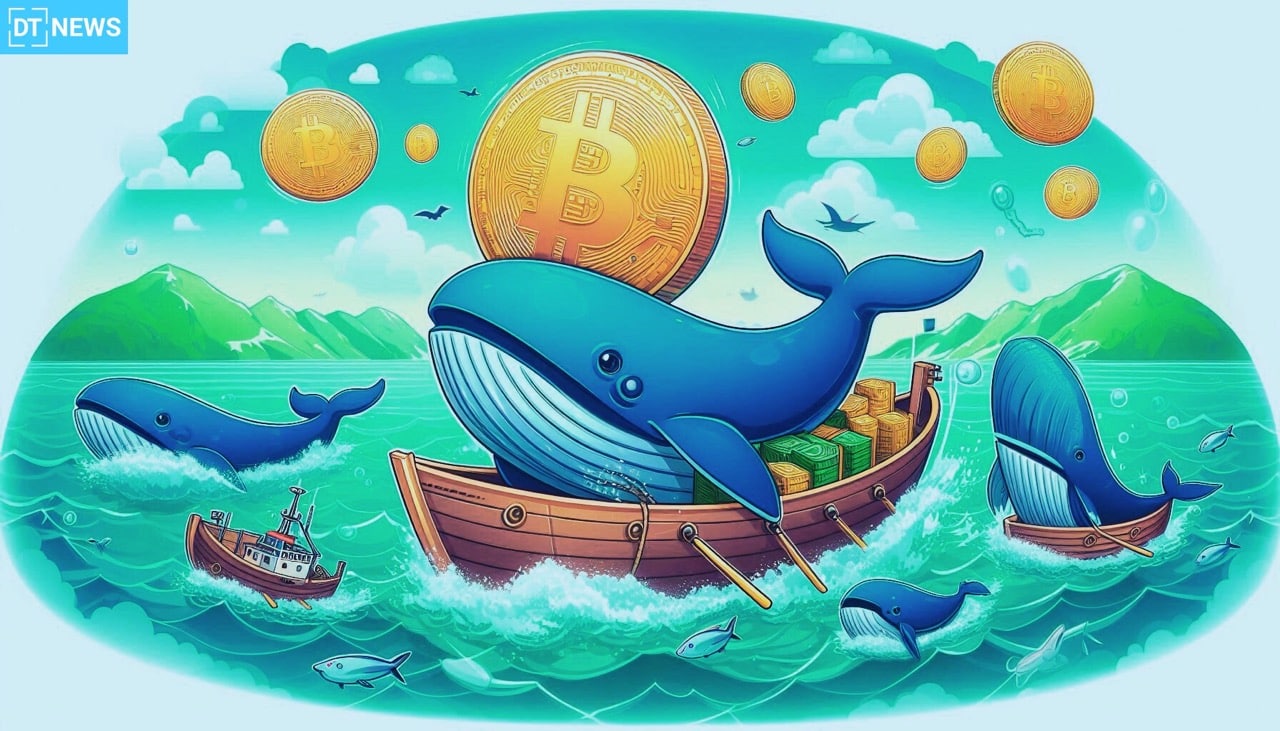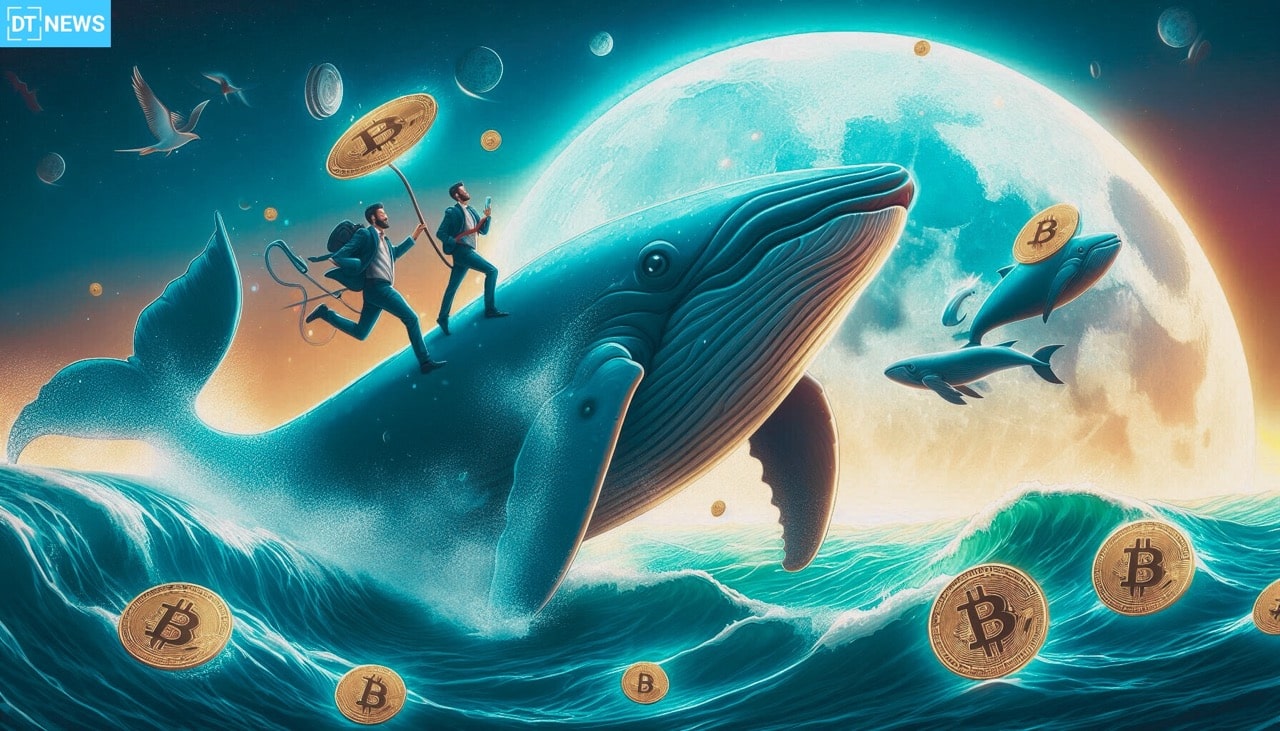The dynamic cryptocurrency landscape is where ‘whales’; those individuals or entities holding substantial amounts of digital assets; really come into their own as indicators of market sentiment and potential price movements. Over the past week, we’ve seen some major whale activity across various cryptocurrencies, showing just how much those players are positioning themselves amid ongoing market volatility.
- Bitcoin (BTC): A whale wakes up
- XRP, Cardano (ADA), Litecoin (LTC): Accumulation at scale, Whale demand surges
- Ethereum (ETH) and Ethereum Name Service (ENS): : Investments amid price decline
- Aave (AAVE): Record holdings
- Ondo (ONDO) and Pepe (PEPE): Real-world asset token and meme coin attract major investors
- Conclusion
- Glossary
Bitcoin (BTC): A whale wakes up
Notably, Bitcoin whales were really active. On-chain data shows that more than 18,000 BTC moved to centralized exchanges over the past week; reportedly worth around $1.26 billion. A dormant address tracked by Arkham Intelligence sent 5,200 BTC after nearly a year of inactivity. Meanwhile, accumulation addresses added 7,100 BTC during market dips. This suggests the market could be divided. Some large holders are locking in gains while others are taking positions in anticipation of the upcoming halving.
Another dormant whale in particular transferred 300 BTC (worth approximately $25.1 million) to Binance. According to reports, this whale had originally bought 1,500 BTC in previous years. The recent move suggests the whale is either diversifying its portfolio or capitalizing on current market conditions, either way, it’s a strategic move.
XRP, Cardano (ADA), Litecoin (LTC): Accumulation at scale, Whale demand surges
XRP has seen increased accumulation by whale investors. Wallets holding between 10 million and 100 million XRP have risen from 1,537 to 1,565 in recent weeks. That is a bullish sign among substantial investors. However, at press time, XRP is trading at around $2.09.

Cardano has also experienced a surge in whale demand, which has driven up its price. The excitement of the establishment of a U.S. Strategic Crypto Reserve before it was later discarded had further boosted investor confidence in ADA, suggesting a positive trajectory for the cryptocurrency.
On the other hand, despite market volatility, Litecoin has also attracted whale interest. Over the past week, large holders’ netflow rose to 233,280. That indicates increased accumulation. This trend suggests potential for a price rally in the near future as whales position themselves strategically within the market.
Ethereum (ETH) and Ethereum Name Service (ENS): : Investments amid price decline
Recently, a whale deposited 10 million USDC to the decentralized exchange Hyperliquid to place a leveraged order for Ethereum at $1,921. That position quickly escalated to 141,013 ETH, resulting in an unrealized profit of $3.65 million. Such substantial transactions reveal the confidence and strategic maneuvers of large investors within the Ethereum market.
Ethereum Name Service (ENS) has experienced a 20% price decline over the past week. Despite that, whale addresses holding between 1 million and 10 million ENS tokens have accumulated an additional 20 million tokens. This is reportedly valued at over $330 million. This accumulation during a price dip indicates a strategic move by large investors, staying put for future gains as the market stabilizes.
Aave (AAVE): Record holdings
The decentralized finance (DeFi) token Aave has seen increased attention from ‘crypto whales. Addresses holding between 10,000 and 100,000 AAVE tokens have collectively added 50,000 tokens to their portfolios. That brings their total holdings to an all-time high of 3.98 million tokens. This accumulation has contributed to a 14% ‘price increase for AAVE; defying broader market downtrends.
Ondo (ONDO) and Pepe (PEPE): Real-world asset token and meme coin attract major investors
Ondo, a token associated with real-world assets (RWA), experienced a remarkable 10,263% spike in large holders’ netflows. The surge indicates aggressive accumulation by major investors, signaling strong bullish sentiment. Similarly, the meme-inspired cryptocurrency Pepe has seen increased accumulation by whale addresses holding between 1 million and 10 million tokens.
Conclusion
The recent whale activities across ‘these cryptocurrencies reveals strong accumulation strategies amid market volatility. Such movements often serve as indicators of potential price trends. While ‘these activities suggest bullish sentiments, retail investors should do their research and exercise caution. After all, the crypto market is inherently volatile and full of risks.
FAQs
What is a crypto whale?
A crypto whale is an individual or’ entity that holds a large amount of a particular cryptocurrency. They can influence market prices through significant transactions.
Why do whale activities matter in the crypto market?
Whale activities ‘can signal market trends. Their large transactions may indicate confidence or concern about a cryptocurrency’s future performance; potentially influencing broader market sentiment.
How can retail investors interpret whale movements?
Retail investors looking to navigate the world of cryptocurrency markets can learn a lot ‘from the movements of whales, but they shouldn’t rely solely on that information. To ‘get a sense of where the market might be headed, you should combine our analysis of whale activity with a healthy dose of research and analysis. That way, you can make informed decisions that are based on more than just what the big players are doing.
Why do whales transfer funds between wallets?
Whales transfer funds between wallets for a variety of reasons. Sometimes it’s about security, other times it’s part of an institutional trading strategy, and sometimes they’re just buying or selling ‘to make a profit. (Or all of the above.)
How can traders track whale movements?
If you want to track whale movements, you can use ‘blockchain explorers, whale tracking platforms and on-chain analytics tools. These tools can help you monitor large transactions and anticipate market trends.
Glossary
Decentralized Finance (DeFi): a ‘blockchain-based form of finance that cuts out the middleman.
Real-world assets (RWA): physical assets that have been tokenized on a ‘blockchain.
Netflow: the difference between the amount of cryptocurrency coming in and going out of wallets. That can give you a sense of whether whales are accumulating or distributing assets.
On-chain analysis: the process of looking at blockchain transactions to understand market behavior.
Liquidity: the ability of a crypto asset to be bought or sold without affecting its price.
Accumulation: when investors (including whales) gradually build up their holdings over time.
Exchange inflow/outflow: refers to big deposits or withdrawals from exchanges—often a sign of buying or selling trends.




















































































































